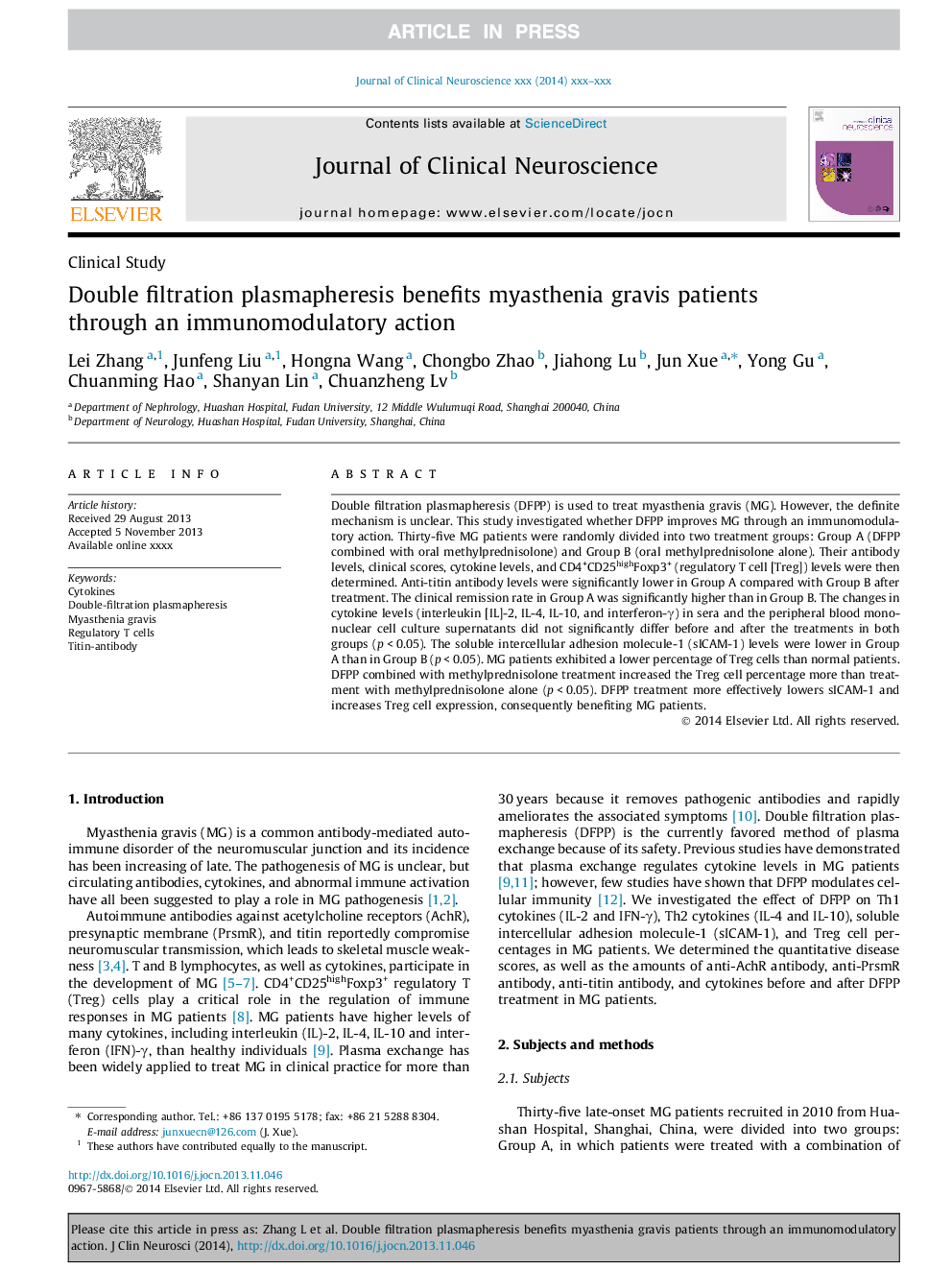| Article ID | Journal | Published Year | Pages | File Type |
|---|---|---|---|---|
| 6019584 | Journal of Clinical Neuroscience | 2014 | 5 Pages |
Abstract
Double filtration plasmapheresis (DFPP) is used to treat myasthenia gravis (MG). However, the definite mechanism is unclear. This study investigated whether DFPP improves MG through an immunomodulatory action. Thirty-five MG patients were randomly divided into two treatment groups: Group A (DFPP combined with oral methylprednisolone) and Group B (oral methylprednisolone alone). Their antibody levels, clinical scores, cytokine levels, and CD4+CD25highFoxp3+ (regulatory T cell [Treg]) levels were then determined. Anti-titin antibody levels were significantly lower in Group A compared with Group B after treatment. The clinical remission rate in Group A was significantly higher than in Group B. The changes in cytokine levels (interleukin [IL]-2, IL-4, IL-10, and interferon-γ) in sera and the peripheral blood mononuclear cell culture supernatants did not significantly differ before and after the treatments in both groups (p < 0.05). The soluble intercellular adhesion molecule-1 (sICAM-1) levels were lower in Group A than in Group B (p < 0.05). MG patients exhibited a lower percentage of Treg cells than normal patients. DFPP combined with methylprednisolone treatment increased the Treg cell percentage more than treatment with methylprednisolone alone (p < 0.05). DFPP treatment more effectively lowers sICAM-1 and increases Treg cell expression, consequently benefiting MG patients.
Related Topics
Life Sciences
Neuroscience
Neurology
Authors
Lei Zhang, Junfeng Liu, Hongna Wang, Chongbo Zhao, Jiahong Lu, Jun Xue, Yong Gu, Chuanming Hao, Shanyan Lin, Chuanzheng Lv,
